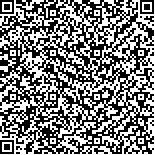| 容敏华,葛莲英,余家华.2014—2019年广西城市癌症早诊早治项目肝癌筛查和随访结果分析[J].中国肿瘤,2021,30(5):328-333. |
| 2014—2019年广西城市癌症早诊早治项目肝癌筛查和随访结果分析 |
| Analysis of Liver Cancer Screening Results in Guangxi Urban Cancer Early Detection and Treatment Project,2014—2019 |
| 中文关键词 修订日期:2020-07-13 |
| DOI:10.11735/j.issn.1004-0242.2021.05.A002 |
|
 |
| 中文关键词: 广西 城市 肝癌 早诊早治 高危评估 筛查 随访 |
| 英文关键词:Guangxi urban liver cancer early detection and treatment high-risk assessment screening follow-up |
| 基金项目:国家自然科学基金(81860596);广西卫生和计划生育委员会自筹经费科研课题(Z20180649);广西壮族自治区级大学生创新创业训练计划项目(201710598044) |
|
| 摘要点击次数: 1612 |
| 全文下载次数: 400 |
| 中文摘要: |
| 摘 要:[目的]分析2014—2019年广西城市癌症早诊早治项目肝癌高危评估、临床筛查和随访结果。[方法] 2014年11月至2019年5月,按照《城市癌症早诊早治项目技术方案》,对广西南宁市西乡塘区、青秀区和兴宁区40~74岁城市居民开展防癌风险评估问卷调查和高危人群评估。评估出的肝癌高危人群免费接受肝癌临床筛查,包括血清乙肝病毒表面抗原(HBsAg)、甲胎蛋白(AFP)检测和腹部超声检查。主动随访和被动随访结合,与所在地肿瘤登记数据库和全人口死因监测数据库进行匹配,获得自2014年11月至2019年10月项目所有参与人群累积肝癌发病信息。分析评估对象年龄和性别构成、筛查参与率、肝癌高危率、各年度筛查阳性病变检出率;以性别、年龄、参加肝癌筛查与否分层,比较肝癌高危和非高危组肝癌发生比率。[结果] 完成防癌风险问卷评估180 407人,40~50岁年龄段人群居多,占比39.02%(70394/180407);女性占比55.46%(100061/180407);肝癌高危率26.95%(48623/180407)。肝癌高危人群筛查12834人次,筛查参与率7.11%(12834/180407)。HBsAg阳性1250人次(9.74%,1250/12834),AFP阳性135人次(1.05%,135/12834),肝硬化68例(0.53%,68/12834),肝占位229例(1.78%,229/12834),疑似肝癌5例(0.04%,5/12834)。随访发现参与问卷评估人群发生肝癌113例,其中肝癌高危组17例(0.03%,17/48623),非肝癌高危组96例(0.07%,96/131784)。非肝癌高危组的肝癌发生比率高于高危组,差异有统计学意义(χ2=8.143,P=0.004)。肝癌高危评估预测模型敏感性15.04%,特异性73.04%。[结论] 城市癌症早诊早治项目癌症高危风险评估预测模型对发现肝癌高风险人群有一定作用,结合血清HBsAg检测综合判定可精确定位肝癌高风险人群。 |
| 英文摘要: |
| Abstract:[Purpose] To analyze the liver cancer screening results in Guangxi Urban Cancer Early Detection and Treatment Project from 2014 to 2019. [Methods] Accordance to the Technical Program of the Urban Cancer Early Detection and Treatment Project,the liver screening program was conducted among urban residents aged 40 to 74 in Xixiangtang,Qingxiu and Xingning Districts of Nanning city from November 2014 to May 2019. The liver cancer risk assessment was performed in all participants,and the identified high-risk subjects received HBsAg,AFP tests and abdominal ultrasound examination. The participants were followed up until October 2019,and the information of participants were matched to local cancer registry database and population-wide cause-of-death surveillance database to obtain cumulative incidence of liver cancer. The screening results were analyzed and compared between high-risk and non high-risk groups.[Results] During the program period 180 407 residents completed the risk assessment questionnaire survey with a predominant age group of the 40~50 years(39.02%,70394/180407) and more female participants(55.46%,100061/180407). A total of 48623 subjects were identified as liver cancer high risk with a high-risk rate of 26.95%(48623/180407),among whom 12 834 attended the liver cancer clinical screening with a compliance rate of 7.11%(12834/180407). The results showed that there were 1250 HBsAg-positive cases(9.74%,1250/12834),135 AFP-positive cases(1.05%,135/12834),68 cases of cirrhosis(0.53%,68/12834),229 cases of space-occupying lesions in the liver (1.78%,229/12834),and 5 cases of suspected liver cancer(0.04%,5/12834). The surveillance database showed that 113 cases of liver cancer were found among the population with questionnaire survey,including 17 cases(0.03%,17/48623) in the high-risk group and 96 cases(0.07%,96/131784)in the non high-risk group. The incidence rate of liver cancer was higher in the non high-risk group than that in the high-risk group(χ2=8.143,P=0.004). The sensitivity of the risk assessment model for liver cancer was 15.04% and the specificity was 73.04%. [Conclusion] The cancer risk assessment model of Urban Cancer Early Detection and Treatment Project is moderately effective for identifying people with high risk of liver cancer;and the effectiveness may be further increased if the risk assessment would include HBsAg test. |
|
在线阅读
查看全文 查看/发表评论 下载PDF阅读器 |